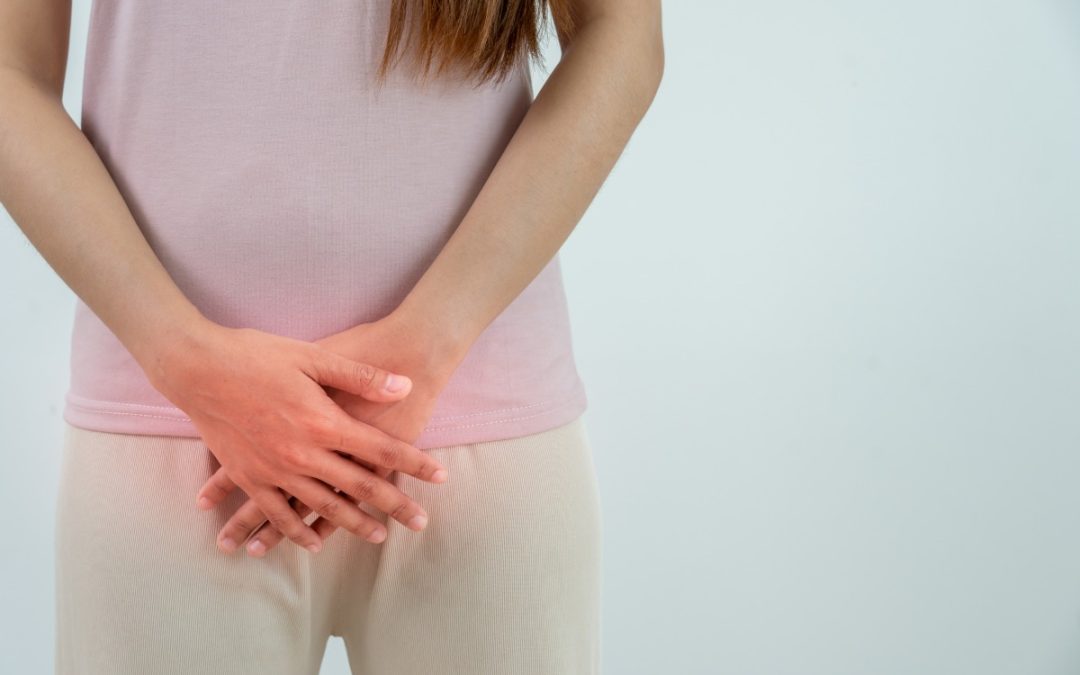Vulvodynia is a chronic pain condition that affects the vulva – the external part of the female genitals – without an identifiable cause such as infection, inflammation, or skin disorder. It can be distressing, frustrating, and often misunderstood, but it’s far from rare. Studies suggest that up to 8% of women experience vulvodynia at some point in their lives, although the real number may be higher due to underreporting.
Understanding what vulvodynia is, what symptoms to look out for, and what treatment options are available is essential for early management and improved quality of life.
What Is Vulvodynia?
Vulvodynia is defined as persistent vulvar pain lasting at least three months, with no clear medical explanation. The pain can be constant or triggered by touch, pressure, or activities such as sitting, exercise, or sexual intercourse. Because it affects such a sensitive area of the body, the impact on daily comfort, relationships, and emotional wellbeing can be significant.
There are two main types:
- Generalised vulvodynia, where pain is felt across the vulva and may be constant or fluctuate.
- Provoked vestibulodynia, where pain occurs only when the vulva is touched or pressure is applied, for example, during sex, tampon insertion, or a medical examination.
Common Symptoms of Vulvodynia
Vulvodynia symptoms can vary from person to person, but they typically include:
- Burning, stinging, or raw sensations in the vulva
- Tenderness or soreness that worsens with touch or pressure
- Pain during sex, tampon use, or prolonged sitting
- Itching or throbbing in the vulvar area
- Pain that lasts for months or comes and goes without obvious triggers
Because these symptoms often overlap with other conditions – such as infections or dermatological issues – vulvodynia is sometimes misdiagnosed or dismissed, delaying proper treatment.
Possible Causes and Risk Factors
The exact cause of vulvodynia remains unclear, but research suggests it may result from a combination of physical, neurological, and psychological factors. Potential causes and risk factors include:
- Nerve hypersensitivity: Overactive or damaged nerve fibres in the vulva can amplify pain signals.
- Previous infections or injuries: Repeated thrush, urinary tract infections, or trauma from childbirth or surgery may contribute.
- Hormonal changes: Low oestrogen levels (for example, after menopause or during certain contraceptive use) can affect vulvar tissue sensitivity.
- Pelvic floor dysfunction: Tight or spasming pelvic muscles can exacerbate pain.
- Chronic inflammation: An abnormal immune response may sensitise nerve endings over time.
- Psychological stress: Anxiety and depression don’t cause vulvodynia but can intensify pain perception and delay healing.
While the condition isn’t contagious or caused by poor hygiene, it can persist for months or even years if not correctly managed.
How Vulvodynia Is Diagnosed
Diagnosis usually involves ruling out other causes of vulvar pain. A healthcare professional will take a detailed medical history, perform a gentle pelvic examination, and possibly carry out swab or urine tests to exclude infection.
A “cotton swab test” may also be used, where light pressure is applied to different parts of the vulva to locate pain areas. Although the process may sound uncomfortable, it’s done carefully to minimise distress and help determine the pain pattern.
It’s also important for clinicians to explore related conditions, such as pelvic pain in women, which can overlap with vulvodynia symptoms.
Treatment Options for Vulvodynia

There’s no one-size-fits-all treatment, but many women find relief through a combination of medical, physical, and psychological approaches. The goal is to reduce pain, restore comfort, and improve quality of life.
1. Topical Medications
Creams or ointments containing local anaesthetics (like lidocaine) can help numb the area temporarily and ease pain during flare-ups or before intercourse. Some doctors may also prescribe oestrogen creams if hormonal changes are thought to contribute.
2. Oral Medications
Certain medications originally designed for nerve pain, such as tricyclic antidepressants or anticonvulsants, can help desensitise nerve pathways. These don’t mean the pain is “in your head” – they simply target how pain is processed in the nervous system.
3. Pelvic Floor Physiotherapy
Tension or weakness in the pelvic floor muscles often plays a role in vulvodynia. Specialised physiotherapists can teach relaxation, breathing, and stretching techniques to help reduce pressure on vulvar nerves.
4. Cognitive Behavioural Therapy (CBT)
Living with chronic pain can take a toll on mental wellbeing. CBT helps patients reframe how they respond to pain and manage anxiety around symptoms. It’s not about ignoring pain – it’s about gaining control over how it affects your life.
5. Lifestyle and Self-Care Changes
- Wear loose-fitting cotton underwear and avoid synthetic fabrics.
- Use mild, fragrance-free soaps and skip bubble baths or perfumed products.
- Apply cool compresses to ease discomfort.
- Avoid prolonged sitting if possible; try using a soft cushion for support.
- Communicate openly with partners about pain triggers to reduce tension and guilt.
6. Medical Procedures
In severe, treatment-resistant cases, nerve blocks or surgical options such as vestibulectomy (removal of affected tissue) may be considered, though these are rare and only recommended after other treatments have failed.
The Emotional Impact of Vulvodynia
Beyond the physical discomfort, vulvodynia can deeply affect self-esteem, sexual relationships, and emotional health. Many women report feelings of isolation or embarrassment, especially if their pain has been dismissed in the past. Support groups, counselling, and open discussions with healthcare professionals can make a huge difference.
Seeking specialist women’s health support in London at GG Healthcare guarantees empathetic, expert care from professionals who understand the complexity of chronic pelvic pain and women’s health conditions.
Living with Vulvodynia
Managing vulvodynia is often about finding the right combination of treatments and lifestyle adjustments that work for you. Recovery can take time, but with the right support, many women experience significant improvement or full remission.
Building a strong relationship with your healthcare provider, attending regular follow-ups, and staying patient with your progress are key. Remember – vulvodynia is a recognised medical condition, not “just in your head.” You deserve to be heard and treated with compassion.
When to Seek Medical Advice
If you experience ongoing vulvar pain, burning, or discomfort lasting more than a few weeks, especially if it interferes with daily activities or intimacy, don’t ignore it. Early assessment helps rule out infections or other causes and ensures appropriate treatment.
Even if the first diagnosis doesn’t provide answers, seek a second opinion. A knowledgeable gynaecologist or pelvic pain specialist can help uncover underlying factors that may have been missed.
Final Thoughts
Vulvodynia is a complex yet manageable condition. While the pain can feel overwhelming, understanding the underlying mechanisms and exploring tailored treatments can bring real relief. Addressing both the physical and emotional aspects of the condition leads to better outcomes and restored confidence.
If you’re struggling with chronic vulvar pain, reach out for professional help. With expert guidance, patience, and a holistic treatment approach, it’s possible to regain comfort – and control – over your body and wellbeing.

